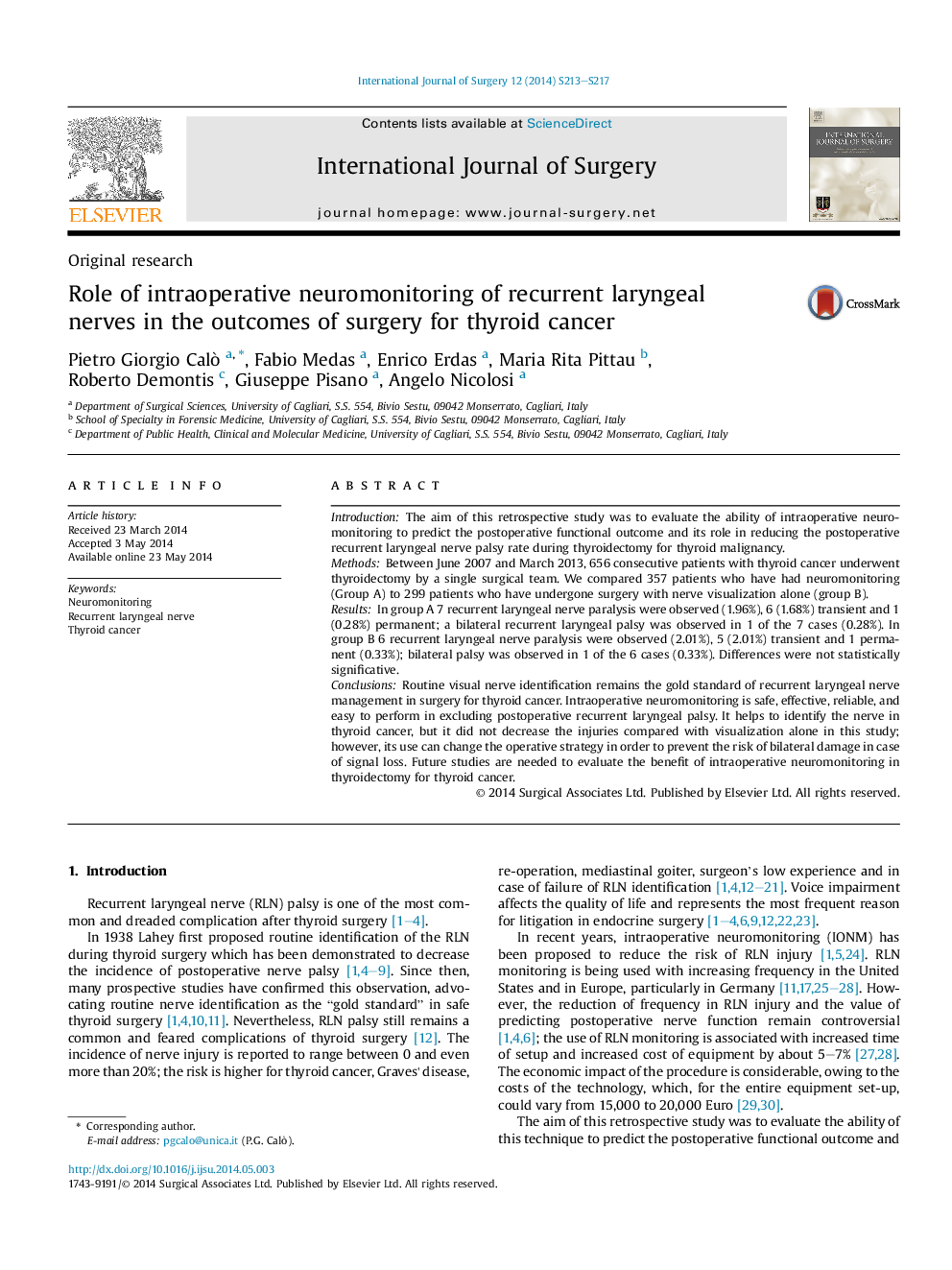| Article ID | Journal | Published Year | Pages | File Type |
|---|---|---|---|---|
| 4286677 | International Journal of Surgery | 2014 | 5 Pages |
IntroductionThe aim of this retrospective study was to evaluate the ability of intraoperative neuromonitoring to predict the postoperative functional outcome and its role in reducing the postoperative recurrent laryngeal nerve palsy rate during thyroidectomy for thyroid malignancy.MethodsBetween June 2007 and March 2013, 656 consecutive patients with thyroid cancer underwent thyroidectomy by a single surgical team. We compared 357 patients who have had neuromonitoring (Group A) to 299 patients who have undergone surgery with nerve visualization alone (group B).ResultsIn group A 7 recurrent laryngeal nerve paralysis were observed (1.96%), 6 (1.68%) transient and 1 (0.28%) permanent; a bilateral recurrent laryngeal palsy was observed in 1 of the 7 cases (0.28%). In group B 6 recurrent laryngeal nerve paralysis were observed (2.01%), 5 (2.01%) transient and 1 permanent (0.33%); bilateral palsy was observed in 1 of the 6 cases (0.33%). Differences were not statistically significative.ConclusionsRoutine visual nerve identification remains the gold standard of recurrent laryngeal nerve management in surgery for thyroid cancer. Intraoperative neuromonitoring is safe, effective, reliable, and easy to perform in excluding postoperative recurrent laryngeal palsy. It helps to identify the nerve in thyroid cancer, but it did not decrease the injuries compared with visualization alone in this study; however, its use can change the operative strategy in order to prevent the risk of bilateral damage in case of signal loss. Future studies are needed to evaluate the benefit of intraoperative neuromonitoring in thyroidectomy for thyroid cancer.
